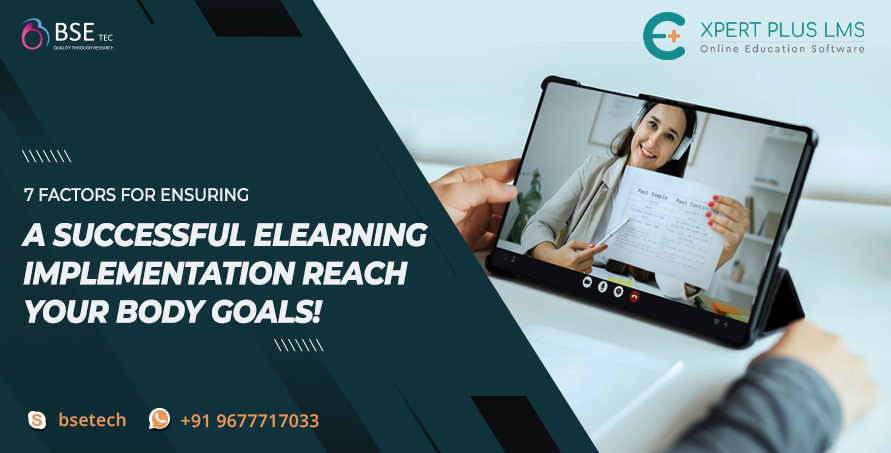7 Factors For Ensuring a Successful eLearning Implementation

An organization locks the idea of implementation of an LMS after a lot of contemplation, and numerous sessions of deliberation and reflection upon the pros and cons. However, to train the employees of an organization, creating a reliable Learning Management System is the best investment one can ever make. It will help them to upgrade their knowledge on a regular basis and stay compliant at all times. More and more businessmen are investing in eLearning app development, but instead of starting from scratch, they are opting to leverage eLearning clone scripts like Udemy. It’s well established that bringing about a change in an organization requires proper planning and meticulous execution. Therefore, eLearning is no exception. In order to ensure a smooth implementation of an LMS has various steps and phases and certain key factors that have to be considered.
How to Implement eLearning Successfully?
If you want to know how to implement eLearning into your system in a streamlined, simplified, and stress-free manner, these are listed in the seven steps below:-
- Identification of your eLearning needs– The most important step before implementation of an LMS in your organization is to identify your training needs that can be met with eLearning. It requires you to be proficient with what kind of training methods you want to integrate– whether it will be classroom training or blended learning or any other learning strategy.
- Have clear and measurable goals and objectives– Before you successfully implement an LMS, you ought to have a clearly defined list of goals and expectations that you would want to achieve through eLearning, like the organizational concerns, how it should be addressed, etc.
- Building a proficient team– After the objectives have been thoroughly outlined and set out, now it’s time to build a proficient and reliable team to actually achieve those objectives. From HR, IT, Training/Learning Professionals, Management, etc.
- Ensure the LMS works for the organizational needs– This step is crucial because the LMS needs to have a fluid and flexible structure, and can be customized in accordance with the organization’s needs, requirements and preferences after understanding what works for them and what doesn’t.
- Prioritize content curation– If the LMS is a bookshelf then the eLearning content like the modules, courses, and materials like eBooks, etc. are the books. So, it’s very important to have high-quality content that is engaging and effective and carefully compiled together.
- Review Reset Refocus– After every quarter, you need to review your LMS, test it whether it works perfectly for meeting organizational needs, and if not, reset the objectives and customize it again and refocus its implementation, so that the management doesn’t have any question about your ROI.
- Continuous improvement– Nothing can be flawless and perfect. Humans keep changing and evolving, so do their needs. Therefore, it is extremely important to constantly keep improving the LMS with each passing day. This helps to keep everything working and in demand.
Also Read: LMS and its Impact on Social Learning
Conclusion
If you are thinking of implementing a flexible and highly customizable LMS like Udemy for your organization, then BSEtec has brought about a seamless and revolutionary Udemy clone– ExpertPlus–which takes care of all your eLearning needs. Book your live demo today!




